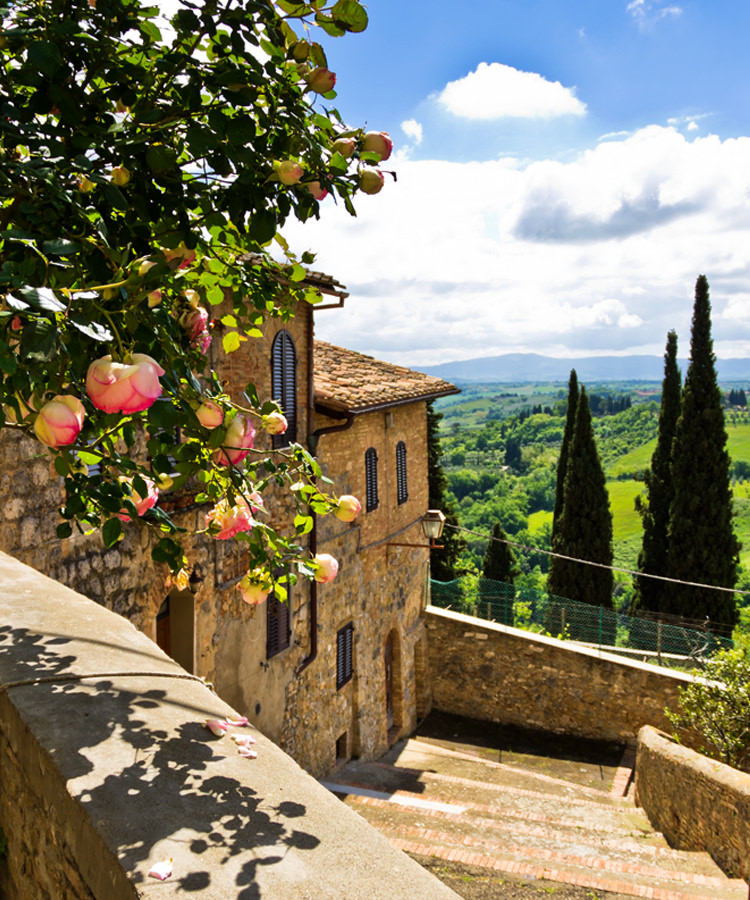Perhaps the most confusing part of looking at an Italian wine label — or any European wine label, for that matter — is the appellation system. Is DOC different from DOCG? Why do some bottles say DOC and some say DOP? What do they even stand for, anyway? And let’s face it – wine law is the least interesting thing about drinking wine. It’s worth taking a second look, though, at the classification that’s listed on that Super Tuscan you’re drinking: the IGT, or Indicazione Geografica Tipica. Only created a mere 25 years ago, it’s for wines that break the rules. But why bother to create a classification for rule-breaking wines in the first place? Because of the real reason why it was created: so that the Italian government could collect more money.
The Italian wine law system as we know it today formally began in 1963 when the Italian government introduced not one, but two levels of quality for appellations that would denote border limits, grape varieties, wine styles, aging requirements, and more, mimicking the already-established French AOC system. The DOC, or Denominazione di Origine Controllata, would be roughly equivalent to an AOC, while a second, higher tier of wine called DOCG, or Denominazione di Origine Controllata e Garantita, would be reserved only for the absolute best wine regions and would have even stricter regulation. The only other designation for Italian wines at this time was simply table wine: Vino da Tavola, or VDT.
Unfortunately, though both of these quality levels were theoretically designed to ensure higher wine quality, the system quickly became flawed. In the years following the creation of the DOC, hundreds of regions were awarded the designation, and even top regions were given generous borders, including subpar land that did not historically producer top-quality wine. Thousands of liters of mediocre wine were being labeled as DOC wine, leading producers to wonder just how much quality the designation guaranteed. The trend continued when the first DOCG designations were awarded in 1980 as this supposedly “best-of-the-best” tier was awarded to regions with little history of quality.
Simultaneously, beginning in the late 1960s and moving through the ’70s and ’80s, producers were frustrated with the restrictions that DOC regulations placed on winemaking – namely, the grape varieties and styles of wine allowed. Tensions were especially high in Tuscany, where Chianti DOC rules stipulated that wines must include Sangiovese, but that the grape could comprise no more than 70 percent of the blend. This meant two things: First, producers were not allowed to make 100 percent Sangiovese wines, and second, producers were not allowed to make wines based on Bordeaux varieties like Cabernet Sauvignon and Merlot, of which there were plantings due to the influx of French migrants during and after World War II.
So, placed in a situation where DOC regulations were at once too lenient in one sense and too strict in another, what did winemakers do? They began to buck the system and make wines that defied the system anyway. Since these wines couldn’t be labeled as DOC, they were instead labeled simply as table wine, since it was the only other option. These wines became known as “Super Tuscans,” the first of which emerged from the 1968 vintage with Tenuta San Guido’s Sassicaia, a Cabernet-based blend aged in new oak. A few years later, Antinori released the 1971 Tignanello, a blend of Cabernet Sauvignon and Cabernet Franc at the time, though current vintages are made as a blend of Sangiovese with Bordeaux varieties.
Seeing the critical – not to mention financial – success of Sassicaia and Tignanello, more producers hopped on the Super Tuscan train, and Italian officials found themselves in an interesting situation. By the 1980s, some of Italy’s most high-quality, sought-after, and expensive wines were labeled merely as Vino da Tavola. Not only did this undermine the DOC/DOCG system at the time, but these winemakers were raking in the profits for these wineries without having to pay any of the fees required to obtain these higher-quality designations. Expensive wines making a mockery of the government’s wine regulation system, with the regulators making less money from them? Not an ideal situation for the Italian government.
This was the impetus to create a new classification of wine, one that would fall between VDT and DOC, and when Giovanni Goria became the Italian minister of agriculture in the early 1990s, he set out to overhaul the system. Thus, the IGT, or Indicazione Geografica Tipica, designation was born under the 1992 Law 164, also known as Goria’s Law. This category of wine would allow producers to have more freedom than DOC and DOCG levels but would theoretically ensure a higher quality of wine than the relatively unregulated table wine category. And while producers still pay more to obtain a DOC or DOCG classification for their cuvées, the IGT allows the Italian government to minimize the controversy – and undercutting of money intake – that the old system once allowed. It’s always about the money.
